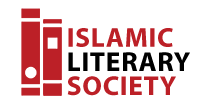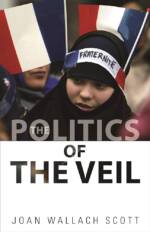Reviewed by Abdul Hai
While I hold a dissenting view regarding the assertions presented in Samuel Huntington’s “Clash of Civilisations,” I find the title itself to be thought-provoking and a significant observation by the author. My perspective aligns with the notion of a Clash of Civilisations, as previously articulated in other discussions. It suffices to acknowledge that this clash is not superficial; rather, it is deeply entrenched in the fundamental and primary perspectives of the world. The Western Civilization, in my view, is characterized by practices of dishonesty, raping, looting, war, and bloodshed, embodying a societal structure that often accentuates the animalistic nature inherent in humanity. Conversely, there exists another facet of civilization dedicated to public welfare, the elevation of human dignity, and the containment of humanity’s animalistic tendencies in favor of cultivating its angelic side, this is the Islamic civilisation. It is precisely this clash that renders these two civilizations unique in the annals of human history. The Western world prides itself on its perceived role as a vanguard of enlightenment for all, yet this enlightenment appears to lack familial values and fails to encompass concepts such as honor, dignity, and self-respect for the racio-religious other. Within the liberal Western worldview, there exists an acceptance and normalization of certain behaviors that diverge significantly from traditional family-oriented values. The liberal Western perspective perceives the advancement of sexual liberation and the disregard for conventional moral values as a progression toward enlightenment.
This rather deluded perception of enlightenment stands in contrast to Islamic principles, which espouse divergent values regarding such conduct. In fact, Muslim women who uphold Islamic principles may be regarded as symbols of backwardness by Western observers. The adherence of Muslim women to the Islamic worldview concerning modesty, particularly their choice to wear the headscarf, has emerged as a subject of considerable interest, notably within France. Within the French context, there exists a perspective that views Muslim women or schoolgirls who opt to wear the headscarf as individuals requiring liberation. his viewpoint culminates in a paranoic urge to enlighten the recio-religious other by introducing them to the “enlightened” principles aligned with French values. One cannot help but chuckle at the irony that the French, so confident in the superiority of their values, seem to find themselves in a state of confusion regarding basic questions of human identity. Consequently, any pontifications on their part about moral frameworks should perhaps be taken with a grain of salt, or even an entire salt shaker. After all, those living in glass houses of tangled ethics should think twice before casting stones at others.
Professor Joan Wallach Scott’s work, “The Politics of the Veil,” delves into France’s discourse surrounding the controversy concerning the ban on headscarves. France’s apprehension towards women does not originate solely with Muslim women; instead, it traces back to a historical pattern of anxiety surrounding the social and cultural position of women within the fabric of French society. Muslim women, in this context, have emerged as a contemporary manifestation or outlet for the longstanding historical unease with women.
Scott’s research addresses various crucial social issues embedded within the fabric of French society. The controversy surrounding headscarves serves as the conduit through which France can reveal its true nature. The notion of equality among diverse groups, particularly those who are from former colonies, rather ironically is challenging for secular France to embrace. Consequently, the headscarf emerges as a symbolic representation of the challenges posed by Islam to the French Republic. Hence, there is a necessity for a political resolution to address this complex issue.
Scott also observes that diverse interpretations exist regarding what qualifies as a headscarf and the requisites stipulated by Islamic legal authorities. However, within the perspective of French politicians, it is singularly denoted as a ‘veil,’ considered an alien element within French society. Scott underscores a historical timeline during which the headscarf emerged as a contentious national issue, commencing in 1989, followed by 1994, and culminating in 2023. Each of these periods witnessed instances where the headscarf controversy was deliberately injected into public discourse to garner public support and serve miserly political objectives. Furthermore, in each successive period, the headscarf evolved into a progressively exacerbated predicament, evolving into a pressing national concern.
Therefore, in 2023, the French commission proposed that the wearing of headscarves be prohibited in all public schools. This recommendation stems from the notion that France cannot tolerate the perceived threat of Muslims undermining its so-called secular values.
Nevertheless, the headscarf controversy extends beyond its surface implications. Scott shows a significant undercurrent of racism prevalent within French society, particularly directed towards individuals from former colonies such as Algerians and Moroccans. In the eyes of the French, these individuals, who were once subjects of colonial rule, are perceived as inherently inferior if not sub-human. This subtle yet pervasive racism manifests itself in the discourse surrounding the headscarf controversy. The French struggled to reconcile the idea that Algerians, Moroccans, and others from former colonies could be considered equals. The evaluation of the headscarf by the French extends beyond its cultural differences; it acquires an additional layer of scrutiny—racism. Consequently, it becomes more socially acceptable for a French individual to discriminate against a woman wearing a veil, not merely because of its cultural distinctiveness, but also due to the ingrained prejudice associated with her status as a former colony resident who, according to these discriminatory beliefs, should not have the right to express her native identity.
Derived from the overarching concept of racism, the narrative in the book progresses to illuminate another radical identity assumed by French society, namely secularism. The French populace has embraced an exceptionally stringent perspective on secularism, extending beyond the mere separation of religion from the state to intrude into individuals’ private lives. Mere failure to conform to the government’s draconian version of secularism and expressing an identity incongruent with the state’s sanctioned norms results in the stigmatization of individuals as extremists. This interpretation draws parallels with a previously articulated notion by former American President George W. Bush Jr., encapsulated in the stark dichotomy of “either with us or with the terrorists.” In a similar vein, the French societal framework tends to categorise individuals into a binary classification, wherein adherence to the stipulated form of secularism aligns one with the societal mainstream, while any deviation may lead to the portrayal of individuals as extremists in various manifestations.
Scott asserts that secularism is employed as a weapon in French society against its Muslim population. In this context, secularism has taken on a status like the religious authority Christianity held during medieval times. Islam and its principles are viewed as anti-Christian, leading secularism to become a rigid stance against any alterations, including the simple act of wearing a headscarf, turning it into a national and political matter. The defense of secularism transforms into a unifying issue that brings together various ideological and political parties. The leaders of these parties become comparable to Pope Urban II, and consequently, a crusade-like method of defending secularism begins to emerge. It’s crucial to note that France differs from typical countries in its unwillingness to embrace diverse interpretations of secularism. Despite the existence of numerous interpretations of secularism, France in her ability to tolerate the religious other, tends to resemble some extremist religious groups found in other parts of the world.
Scott also delves into the aspect of individualism. The argument posited here is whether Muslim women or girls who wear the headscarf do so out of personal choice or if they are compelled. In this context, French political forces attempt to intrude into the personal space of individuals and impose their interpretation of why a Muslim girl or woman chooses to wear a headscarf. The political class influences the perception that wearing the veil is not a conscious or rational decision, but rather a result of external pressure. In essence, the extreme stance taken by French society implies that they justify discrimination against a significant population by assuming that any woman wearing the veil must be doing so under duress, refusing to acknowledge the possibility of a conscious and rational choice.
Any explanation provided by a Muslim woman who wears the veil, justifying it as a religious or personal choice, is deemed insufficient. Such explanations are considered uneducated, pre-modern, or influenced by community pressure. In this context, a Muslim woman finds herself unable to articulate or demonstrate her sincerity, dedication, or conviction to the veil, as per the narrative set by the French political elite. Consequently, there is a call for government intervention through the establishment of a law that allows a third party to interfere in any decision made by a woman to wear the veil. Some argue that the veil is seen as alien to a woman, and she cannot consciously choose it as a means of expressing her individuality. Therefore, the authority has the license to act on her behalf and remove that choice. In essence, the concept of individualism is negated, and the government contends that society must exert its influence and explore legal interpretations to eliminate the presence of the headscarf from society.
France’s assertion of being a secular society where individual freedom is valued appears to be ironic. This is because every law and action taken to prohibit Muslim women from wearing the headscarf and to limit Islamic practices contradicts the core idea of individual choice and freedom. It seems like France is conveying a message that while you may have the freedom to do anything in your life and wear what you want, as long as it aligns with what the authorities dictate.
There is a belief in France that Islam regards women as a potential sexual temptation, hindering the development of men. In parallel, there exists a (mis)understanding that Muslim men seek to control women, placing them within societal, economic, and political constraints to prevent them from becoming temptations. By prohibiting women from wearing headscarves in college and universities, many Muslim women are discouraged from pursuing higher education. This restriction, imposed by the French government, is seen as subjecting these women to the very male dominance they claim to oppose. In essence, the French government is limiting these women’s choices regarding education and their decision to wear or not wear the veil. Meanwhile, as Scott demonstrates, French feminists appear to be more focused on the implementation of government-imposed restrictive laws than on advocating for the actual freedom and expression of women’s freedom of choice. In this context, feminists seem to align with the government’s agenda, serving as spokesperson and inadvertently aiding in the restriction of women, subjecting them to male dominance.
Professor Scott’s work, “The Politics of the Veil,” stands as a pivotal study illuminating how the French respond to Muslim women wearing the veil. Through this examination, one can reasonably conclude that the French government and social structure are rooted in racism, reflecting a belief in the superiority of one group over others. This study sheds light on a French society that seems to linger in the era of colonisation, challenging the perception of freedom, individual rights, and choices that France claims to value. Instead, it presents a picture of a dictatorial society, particularly in its anti-Muslim and anti-Islamic policies. Professor Scott deserves commendation for producing such a crucial text, which should be integral to study materials and on the bookshelves of every Muslim seeking to understand France’s double standards concerning its Muslim citizens.


Add Comment